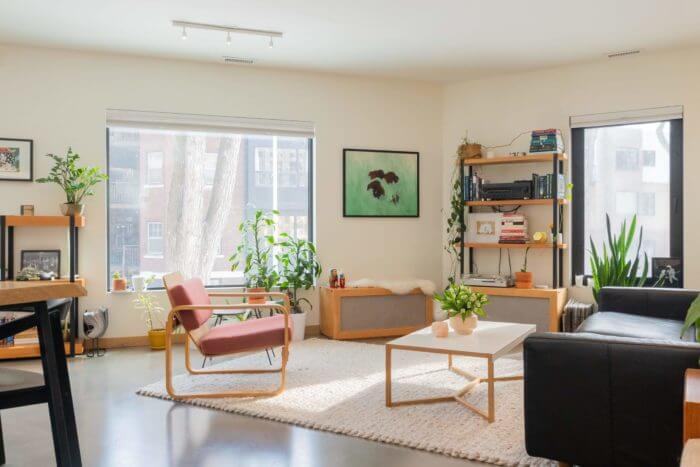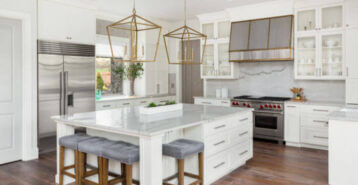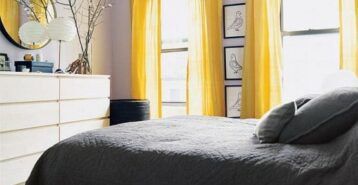Are you doing a home improvement project?
Modernize can pair you with three to four pros in your area, so you can compare options and save time and money.
Lighting is an important design detail that is easy to overlook in a living room. Choosing the right lighting has the power to transform the look, feel, and mood of a room. It is an interior designer’s secret weapon to make a room look incredible by playing up its best features.
Lighting requirements vary from room to room, and they vary depending on its size, purpose, layout, and proximity to natural light. You’ll also want to take into account how your family uses the living room, from watching TV to hosting family and friends, so you can find the right balance of function and comfort.
Think of living room lighting in layers. Each layer is responsible for a specific kind of lighting that works with the others to enhance the room’s design. There are three primary types of lighting that serve different purposes, according to the American Lighting Association:
Ambient lighting: This is the primary source of illumination in a room. It is designed to supplement natural light and often comes from above — recessed, pendants, and chandeliers are a few examples.
Accent lighting: The purpose of accent lighting is to highlight a room’s architectural features and decor. It provides a smaller cast of light and is often directed to focus on smaller areas.
Task lighting: This type of lighting provides bright and focused illumination in a specific area to perform a function. You will find task lighting most often in kitchens and home offices where a lot of household work takes place. Common task lighting in a living room is a floor lamp that offers direct overhead illumination for reading.
The Best Lighting for Living Rooms
Recessed Lighting
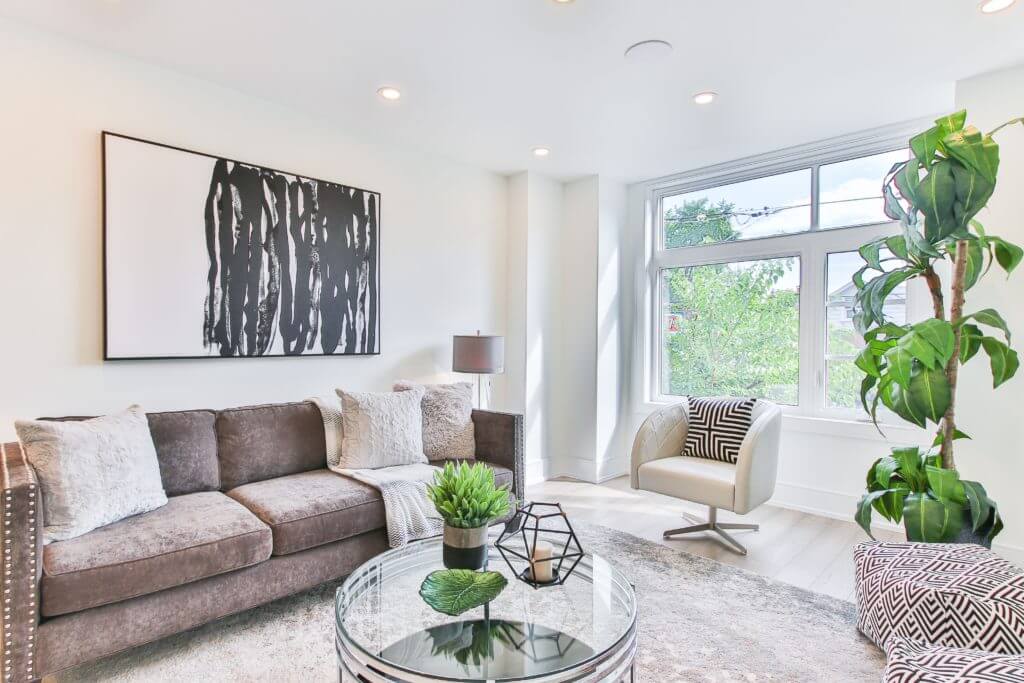
Recessed lighting is installed directly into the ceiling to provide overhead ambient light to a room. A recessed fixture includes the housing, bulb, and trim and ranges in size from four to six inches in diameter for most residential purposes. It provides a living space with a nice base of illumination, and you can pick from a selection of trims to complement your room’s design. A licensed electrician can help determine the best size, quantity, and location of recessed lighting in your home.
Track and Monorail Lighting
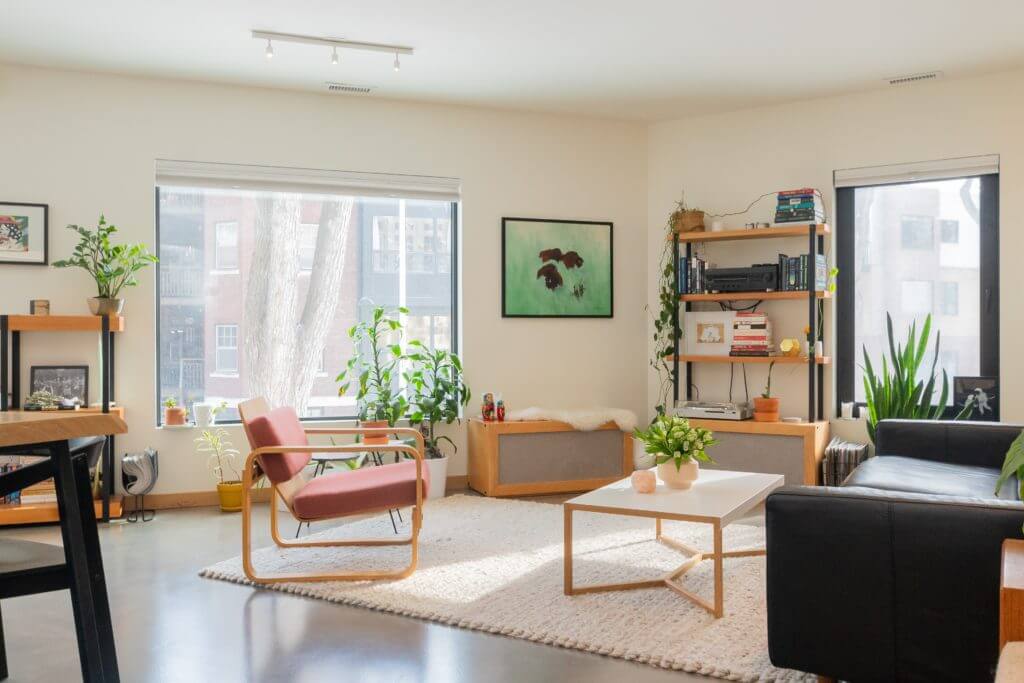
Track lighting’s most desirable feature is its flexibility. Lighting heads are installed along a track (four to six feet is common) that contains electrical conductors to power the fixture. Each head can move along the track and swivel, allowing you to customize how the light casts down into your room.
Monorail is a type of track lighting where the rail is straight or curved for a more custom look. Both track and monorail lighting work well if you have a darker area that needs illumination — both provide a combination of ambient and accent lighting without the need for a floor lamp.
Cabinet Lighting
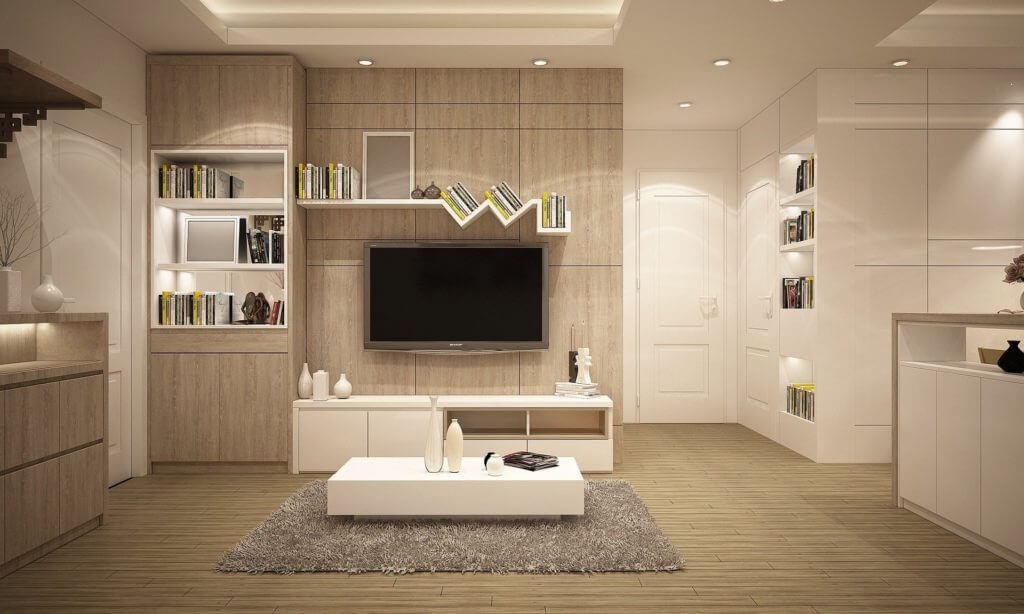
Add visual interest to your living room cabinets and shelving with downlights. Install them beneath shelves to cast light downward to highlight photos, artwork, and other decor items. You have many options to choose from depending on the size of your furnishings and how you prefer powering them. Small spotlights and light strips are the most common, and both are available in hard-wired, plug-in, or battery-operated models.
Find the Right Contractor for Your Project
Whether you’re ready to begin your project now or need some expert advice, our network of contractors are here to help. With a few simple questions, we’ll find the best local professionals for you
Flush and Semi-flush Mounts
Ideal for ceilings eight feet and under, flush and semi-flush mount lights offer a large amount of ambient light in a space and come in every style to suit your preference, from farmhouse and traditional to ultra-modern and everything in between. In a flush mount, the fixture touches the ceiling, while a semi-flush mount includes a few inches of space between the ceiling base and fixture. The difference is primarily aesthetic, though a semi-flush offers a bit more downlight capability.
Wall Sconces
Living room lighting should include areas of light at various heights to create a sense of balance and movement (and to prevent the space from looking like an office). A wall sconce is a type of accent light fixture that can offer a pleasing contrast of light and shadow. It also provides light at eye level, and its wall-mounted installation saves floor space.
Pendant Light
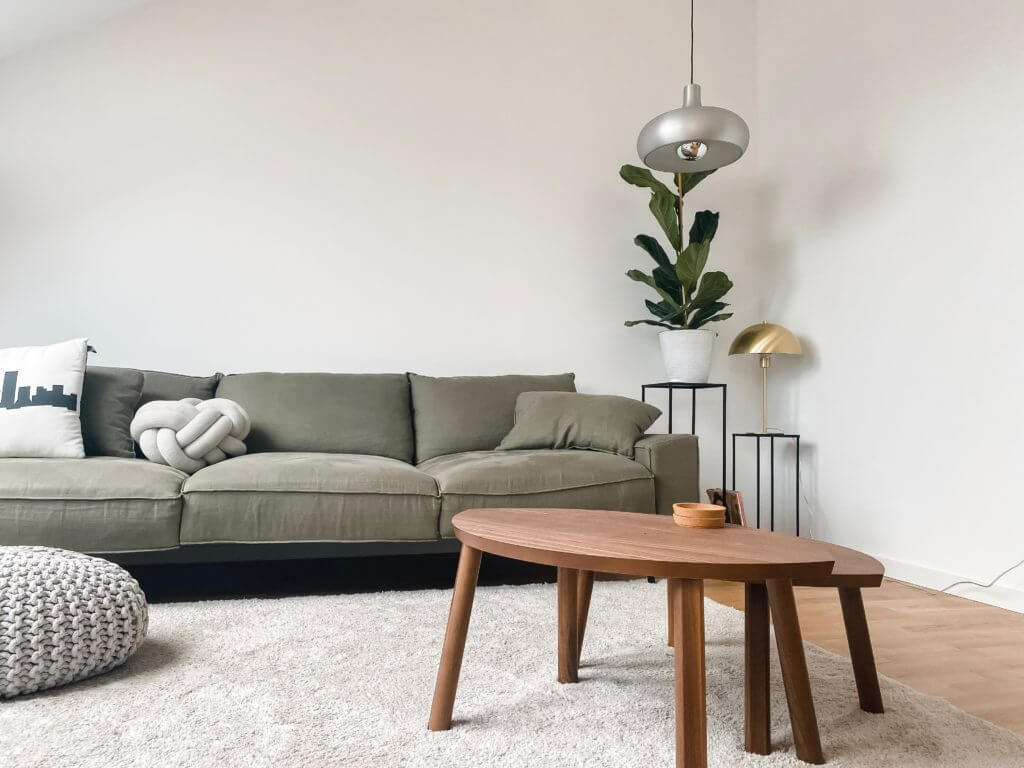
A pendant light can create a pleasing focal point in a living room and can enhance its design. There is a style, color, and shape to match any motif or palette. When selecting a pendant light, be sure to account for scale to prevent installing a fixture that is too large or small for your space. You will also want to be sure your ceiling height can accommodate this type of lighting. A good rule of thumb is to allow at least seven feet between the floor and the bottom of the fixture.
Table Lamps
Because the living room is commonly used for a variety of purposes, it is important to several different types of light sources coming from different heights. A table lamp or two provides a layer of soft light in a specific area – on the side or behind a sofa or next to a side chair are common places. Table lamps also make great design features – because they are available in so many colors and styles, they are often a detail that can help tie a room together.
Floor Lamps
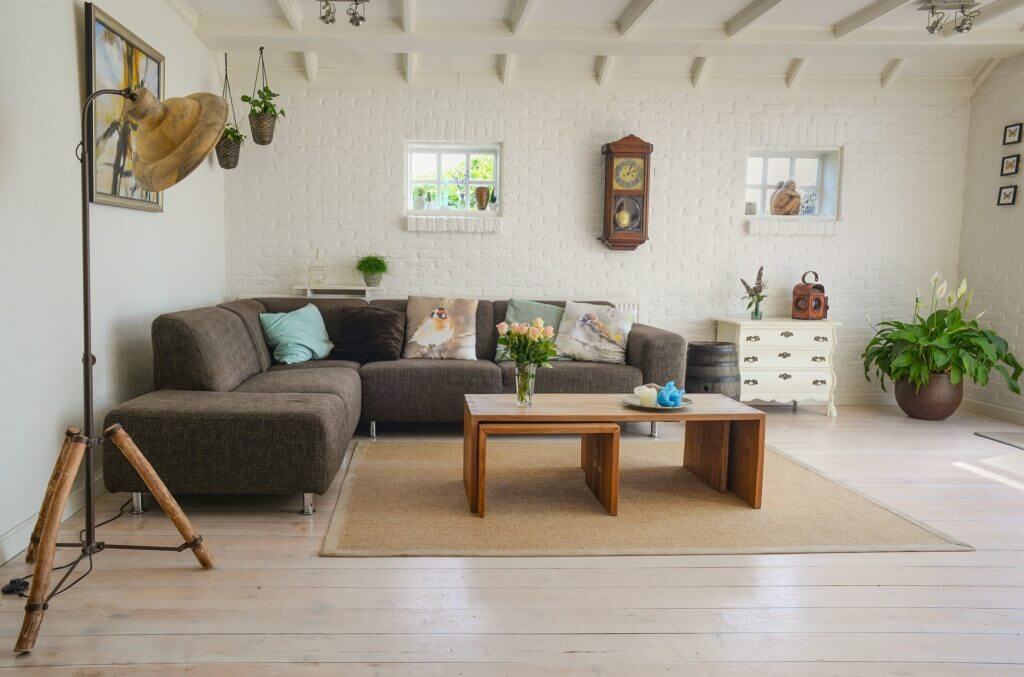
A floor lamp is a design element that is both stylish and functional. It adds dimension to a room with another layer of light at the sightline. Different styles of floor lamps provide different types of lighting. A few examples include torchiere lamps that cast light upward to illuminate a specific area of a room, club lamps with shades for a soft glow, and down bridge lamps that direct light downward for reading.
Other Living Room Lighting Considerations
Choose the Right Bulbs
Walking the light bulb aisle can feel overwhelming. With so many choices, it can be hard to figure out what kind of bulbs are best for each room. For quick reference, light is measured across a spectrum from cool to warm. Daylight and cool light bulbs have a more bluish hue and can look harsh and clinical in living rooms. Prevent the doctor’s office look by opting for warm bulbs for a relaxed and calm atmosphere.
Control the Brightness
The ability to control the amount and intensity of light in your living room will help you create your desired mood and environment. For example, your desired lighting while watching a movie will be different from that when entertaining, so dimmer switches for all hard-wired fixtures are a real benefit.
Encourage Light Movement
Often called interior designers’ secret weapon, mirrors help amplify light from natural and artificial sources. Place a mirror across from living room windows to encourage natural light to reflect around the room. Do the same for your artificial light – place a mirror near a table lamp to maximize the amount of light from specific areas.
Ready to start your own home improvement project?
Find the Right Contractor for Your Project
Whether you’re ready to begin your project now or need some expert advice, our network of contractors are here to help. With a few simple questions, we’ll find the best local professionals for you
Reviews from Real Homeowners
Welcome to Homeowner Resources! We are the Modernize blog. Modernize pairs more than 3 million homeowners a year with pre-vetted contractors in their area. This blog started because we believe homeowners should know everything about their homes, from how their HVAC works to which front door colors they might love. On Homeowner Resources, you can find information on every part of your home, right down to how you can negotiate with contractors to get the best price. Here's more about the blog.
Need a contractor? Learn more about how Modernize finds the right pro for you.
